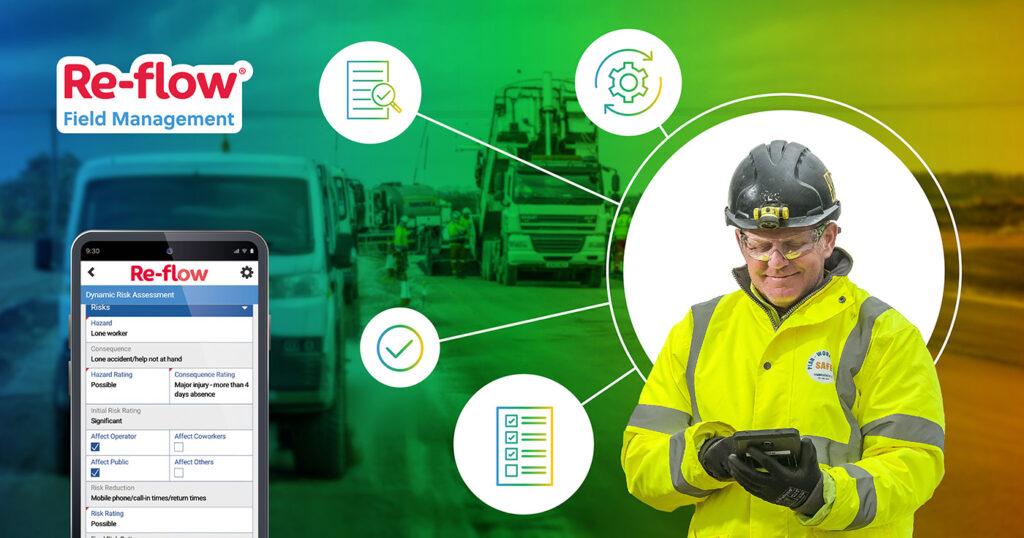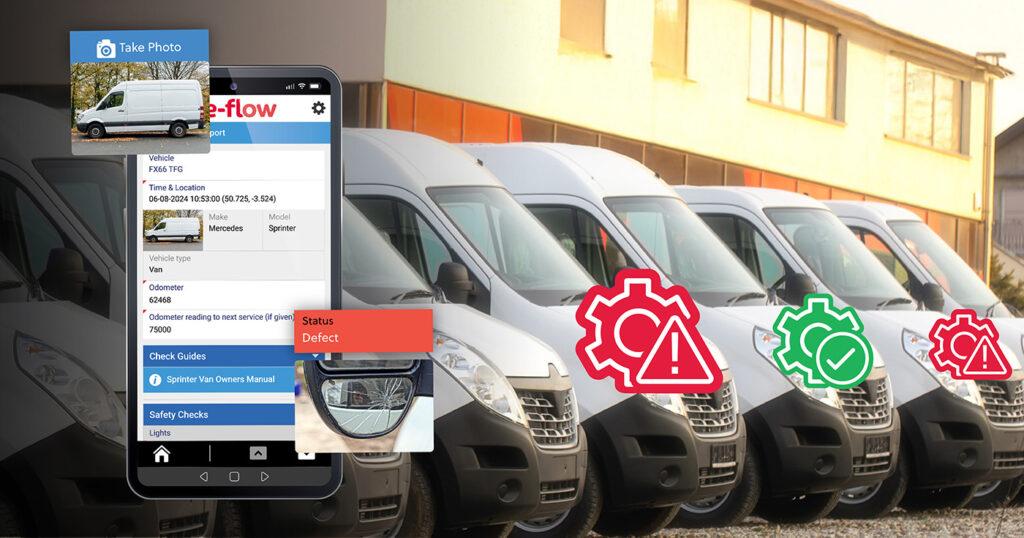
Across UK infrastructure, software-driven compliance has quietly transformed how teams operate. Businesses are now experiencing easy-to-access, auditable document records across their entire workflow – often automatically – reassuring management that they’re running to the highest standards of work and that they have the data available whenever they need to prove it.
This has changed the day-to-day experience of those working on and managing sites across the country, eliminating any risk of compliance processes not being followed correctly and providing confidence and peace of mind.
From manual processes to workflow opportunities
Toppesfield, a leading national surfacing contractor, began using Re-flow in 2019 to streamline data collection from site. The process began as a simple shift away from manual form filling and record keeping, but quickly evolved into a larger transformation of their workflows, driven by the opportunities found in industry-specific software.
What follows is an overview that covers the impacts, big and small – from obvious changes to more subtle ones.

Stage 1: Automations and visibility
First, the more obvious. From dip sheets to daily defect checks, every single digital document submitted on site is synced immediately to the cloud, so the office dashboard (available through web browsers) can show the status of tasks like defect sheets and daily job briefings. It gives compliance visibility in the office in real-time by showing which tasks have or haven’t been completed.
But for Toppesfield the software goes further: at 9.30am, day in day out, a software process runs automatically that checks all of Toppesfield’s sites at once. Have they had defect sheets back for the job? Have they had their daily job briefings back? The software generates a report that goes to middle managers who are able to efficiently nudge whoever they need to. At 10.30am the automation runs again, but this time it’s sent to directors and senior managers.
When non-compliance carries the threat that it does – of accidents, of fines, of disputes, of reputational impact – being able to know that everything is in place day in day out is a huge reassurance.
“We’ve got confidence that everything’s been done,” Sam Hennessy, Toppesfield’s business improvement manager, says. “Managers and senior managers have the comfort to look at a very simple report that is emailed to them directly and to say, ‘OK, yes, all my sites are compliant.’” Free from worry they’re able to carry on with the work they want to do.
Stage 2: the enforcement of onsite compliance tasks and the setting of high safety standards
Of course, each sector across UK infrastructure has its specific dangers. For Toppesfield their fleet of large vehicles pose a big risk, for example. And the industry is well aware of the consequences of gaps in safety processes, which can sometimes be fatal.
When using sweepers and sprayers and other plant items, Toppesfield use Re-flow’s digital forms to guide operatives through safety checks, mandating signatures, photos, and confirmations – and making it impossible to skip steps.
So the forms don’t just record compliance: they lead operatives through pre-planned processes, and intuitively enforce what’s required.
But what if the safety net of compliance processes highlight an issue on site? How does the software and its forms react? Does it have the flexibility in order to adapt to challenges?

Stage 3: Dealing with issues
Toppesfield have developed their forms so that, if one safety factor is missing, the form either halts work, suggests a (pre-planned) alternate way of deploying safety measures that adapts to the risk, or mandates the need to speak to a director, again automatically.
“We require auto braking systems to be fitted on vehicles that reverse a lot,” Sam explains. “But, in the scenario where we get one of those vehicles on site and the test to see that the system is working fails, there are other things we can then do to mitigate the risk. It just needs more planning.
“There’s a point in the form that says, ‘If we can’t do this, you need to speak to a director before you instigate the additional risk mitigation, and it’s recorded. You know that something isn’t working as expected, but we’ve put further safety measures in place and we’ve agreed what to do with a senior member of the team and that’s on the form. We’re good to go.”
For highways firms, the value of field-operations software isn’t just about ticking compliance boxes. It’s gaining the confidence that risks have been managed, that reputations are protected, and that clients see a business that takes safety and accountability seriously, while remaining flexible enough to adapt to challenges.





